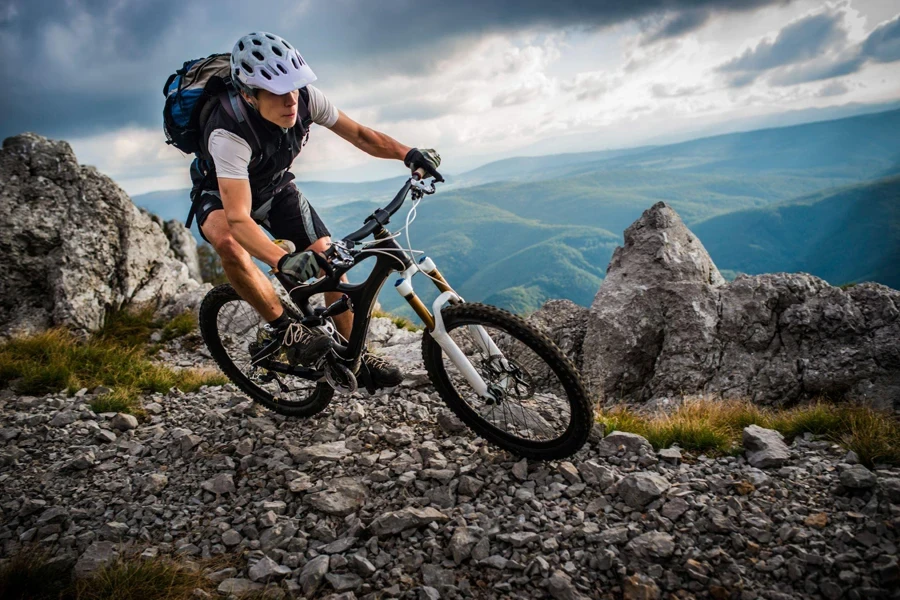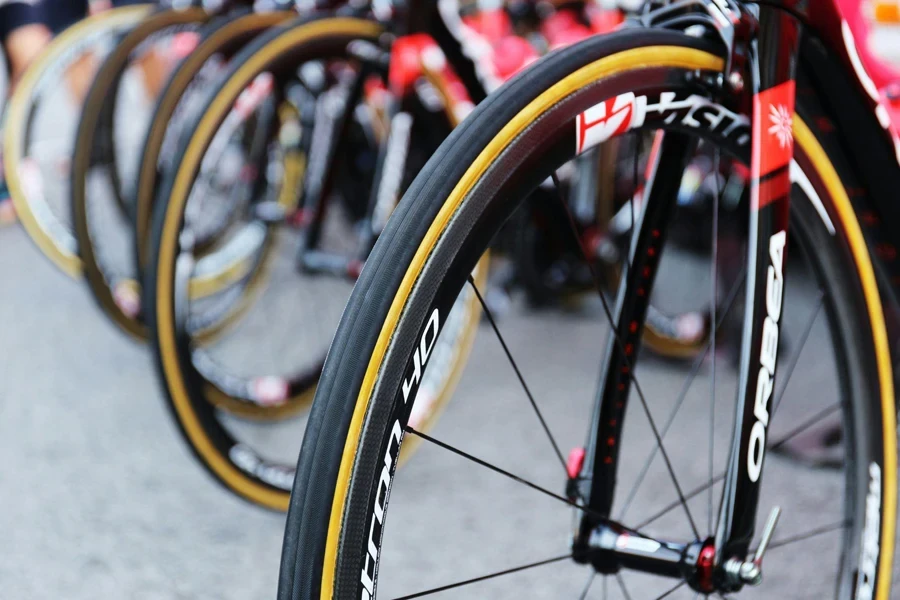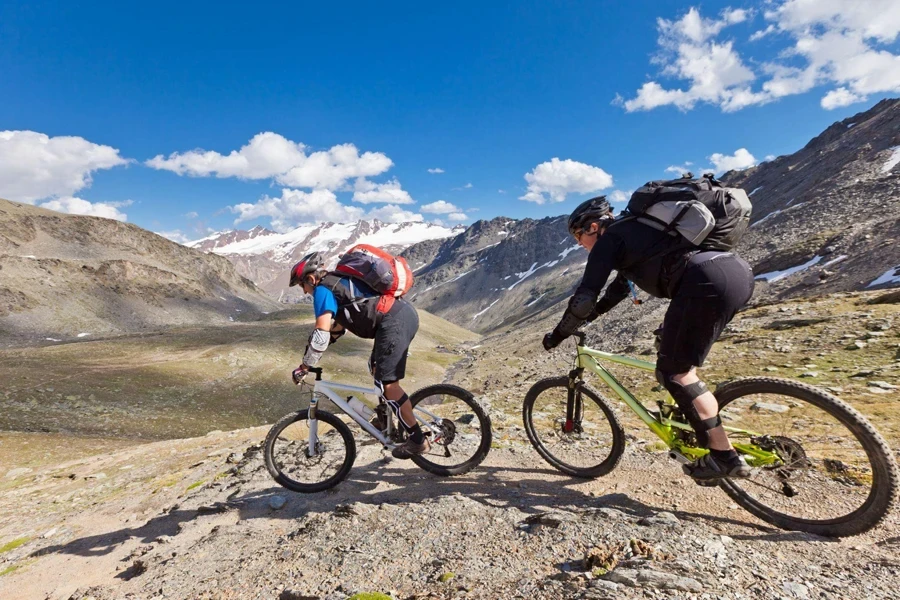Table of Contents
– Introduction
– Basic Definitions
– Market Overview
– Structural Differences
– Component Differences
– Comfort and Ergonomics
– Additional Features and Accessories
– Conclusion
– FAQs
Introduction
In the ever-evolving world of cycling, understanding the nuances between two types of bikes – mountain bikes and road bikes – is crucial for retailers and procurement professionals. This comprehensive guide delves into the key differences, market trends, and consumer preferences to help you make informed decisions in your inventory and sourcing strategies.
Basic Definitions
What is a Mountain Bike?
Mountain bikes are rugged, off-road vehicles designed to tackle rough terrain. According to Bikeradar.com, these bikes feature sturdy frames, wider tires with knobby treads, and often come with suspension systems to absorb shocks from uneven surfaces. These high-performance machines are engineered with advanced materials like carbon fiber or lightweight aluminum alloys, offering an optimal strength-to-weight ratio. Mountain bikes come in various specialized categories, including cross-country, trail, enduro, and downhill, each tailored to specific riding styles and terrain challenges.
For business buyers, it’s crucial to note that modern mountain bikes incorporate cutting-edge technologies such as hydraulic disc brakes, electronic shifting systems, and adjustable geometry, which can significantly impact fleet versatility and maintenance considerations. The robust construction and adaptability of mountain bikes make them ideal for diverse commercial applications, from ecotourism operations to urban delivery services in challenging environments.

What is a Road Bike?
Road bikes are sleek, lightweight machines built for high speeds on paved surfaces. They typically have thin tires, drop handlebars, and aerodynamic frames to maximize efficiency on smooth roads. Engineered for performance, these bikes often feature high-end carbon fiber frames and forks, reducing weight while maintaining structural integrity.
For business buyers, it’s important to note that modern road bikes incorporate advanced technologies such as electronic shifting systems, hydraulic disc brakes, and aerodynamic tube shapes, which can significantly impact fleet performance and maintenance requirements. Road bikes come in various subcategories, including endurance, aero, and climbing models, each optimized for specific riding conditions and longer distances. Their efficiency and speed make them ideal for commercial applications like courier services in urban environments, corporate wellness programs, or high-end bicycle rental operations catering to enthusiasts and tourists in scenic locations.
Market Overview
The bicycle market is experiencing robust growth, with both mountain bikes and road bikes showing impressive performance. The mountain bike segment is poised for significant expansion, with the market size projected to increase by USD 3.78 billion between 2024 and 2028. This represents a compound annual growth rate (CAGR) of 6.11%, indicating steady and substantial growth in the mountain bike sector. The market’s expansion is driven by factors such as the rising popularity of mountain biking tourism and the increasing adoption of electric mountain bikes.
In comparison, the road bike market is demonstrating even stronger growth dynamics. The global road bike market reached a valuation of USD 15 billion in 2023 and is projected to grow at a CAGR of 8.62% in the coming years. This higher growth rate suggests that road bikes are experiencing particularly strong demand, possibly due to their versatility for both recreational and commuting purposes. The road bicycle segment is anticipated to lead the overall bicycle market with the largest revenue share of 41.5% in 2024. This dominance can be attributed to the simplicity and efficiency of road bikes, as well as their popularity among fitness enthusiasts and urban commuters.
Both segments of the bicycle market present attractive opportunities for businesses operating in the industry. The strong growth projections for mountain bikes and road bikes indicate a healthy market environment with potential for expansion and innovation. Companies in this space should consider strategies to capitalize on these trends, such as developing advanced technologies, expanding product lines, and targeting specific consumer segments to maximize their market share and profitability.

Structural Differences
Frame Design
Mountain bike frames are often made from aluminum or carbon fiber, prioritizing durability and strength. Road bikes, on the other hand, frequently use carbon fiber or high-grade aluminum to minimize weight. According to Cyclingnews.com, carbon fiber frames are becoming increasingly popular in both categories due to their excellent strength-to-weight ratio.
Geometry and Shape
Mountain bikes have a more upright geometry with shorter top tubes and higher handlebars, promoting stability and control for mountain bikers. Road bikes feature a more aggressive, aerodynamic position with longer top tubes and lower handlebars.
Mountain Bike Wheels
Mountain bikes typically use 27.5″ or 29″ wheels with wide rims to accommodate larger and wider tires. These provide better traction and stability on rough terrain for mountain bikers.
Road Bike Wheels
Road bikes generally have 700c wheels (approximately 28″ in diameter) with narrow rims, optimized for high speed and efficiency on smooth surfaces.
Component Differences
Tires
Tread Patterns
Mountain bike tires have aggressive, knobby treads for grip on loose surfaces. Road bike tires are smooth or have minimal tread patterns to reduce rolling resistance.
Width and Pressure
Mountain bike tires range from 2.0″ to 2.6″ wide and are run at lower pressures (20-35 PSI) for better traction. Road bike tires are much narrower, typically 23-32mm, and run at higher pressures (80-120 PSI) for reduced rolling resistance.

Suspension
Front Suspension
Many mountain bikes feature front suspension forks, offering 100-170mm of travel to absorb impacts. Road bikes generally have rigid forks for maximum efficiency.
Full Suspension
Some mountain bikes, particularly those designed for more aggressive riding, have both front and rear suspension. This is never found on traditional road bikes.
Gear Systems
Range of Gears
Mountain bikes often have a wider range of gears, with lower gearing for steep climbs. Road bikes typically have a narrower range optimized for high speed on flatter terrain.
Gear Mechanisms
Mountain bikes increasingly use 1x drivetrains (single front chainring) for simplicity, while road bikes usually have 2x setups for more precise gear ratios.
Intended Use and Performance
Terrain Suitability
Off-Road and Technical Trails
Mountain bikes excel on rough, unpaved surfaces, including rocky trails, forest paths, and steep descents. Their robust construction and wider tires provide stability and control in challenging conditions.
Pavement and Smooth Surfaces
Road bikes are purpose-built for high speed on smooth, paved surfaces. Their lightweight design and aerodynamic features make them ideal for long-distance rides and racing on roads.
Speed and Efficiency
Aerodynamics
Road bikes are designed with aerodynamics in mind, featuring streamlined frames and components to reduce wind resistance. Mountain bikes prioritize stability over aerodynamics.
Rolling Resistance
The smooth, narrow tires of road bikes offer significantly less rolling resistance on paved surfaces compared to the wider, knobby tires of mountain bikes.
Comfort and Ergonomics
Rider Position
Upright vs. Forward-Leaning
Mountain bikes promote a more upright riding position for better visibility and control on technical terrain. Road bikes encourage a forward-leaning position to improve aerodynamics and power transfer.

Handlebars
Flat Bars
Mountain bikes typically use flat or slightly raised handlebars, offering a wide grip for better control and leverage when navigating obstacles.
Drop Bars
Road bikes feature drop handlebars, providing multiple hand positions for comfort on long rides and allowing a more aerodynamic tucked position.
Saddle Design
Comfort Features
Mountain bike saddles are often wider and more padded to accommodate an upright riding position and absorb shocks from rough terrain.
Performance Features
Road bike saddles are generally narrower and firmer, designed to support a more forward-leaning position and reduce weight.
Additional Features and Accessories
Brake Systems
Disc Brakes
Disc brakes have become standard on mountain bikes due to their superior stopping power in all conditions. They’re increasingly common on road bikes as well, especially for models designed for all-weather use.

Rim Brakes
Traditional rim brakes are still found on many road bikes, particularly at lower price points, due to their lighter weight and simpler maintenance.
Pedals
Clipless vs. Flat Pedals
Mountain bikes often use flat pedals or mountain-specific clipless pedals that allow easier foot disengagement. Road bikes typically use road-specific clipless pedals for maximum pedaling efficiency.
Conclusion
Choosing between mountain bikes and road bikes depends on the intended use, terrain, and personal preferences of the end-user. As a retailer or procurement professional, understanding these significant differences is crucial for making informed inventory decisions and meeting customer needs.
FAQs
Can a mountain bike be used as a road bike?
Mountain bikes can be used for both, road and trail, that’s why they are a great option for someone who is into off-roading as well as urban riding. When comparing their prices, mountain bikes are in general the more expensive option out of the two and this is because they have more specs and features.




